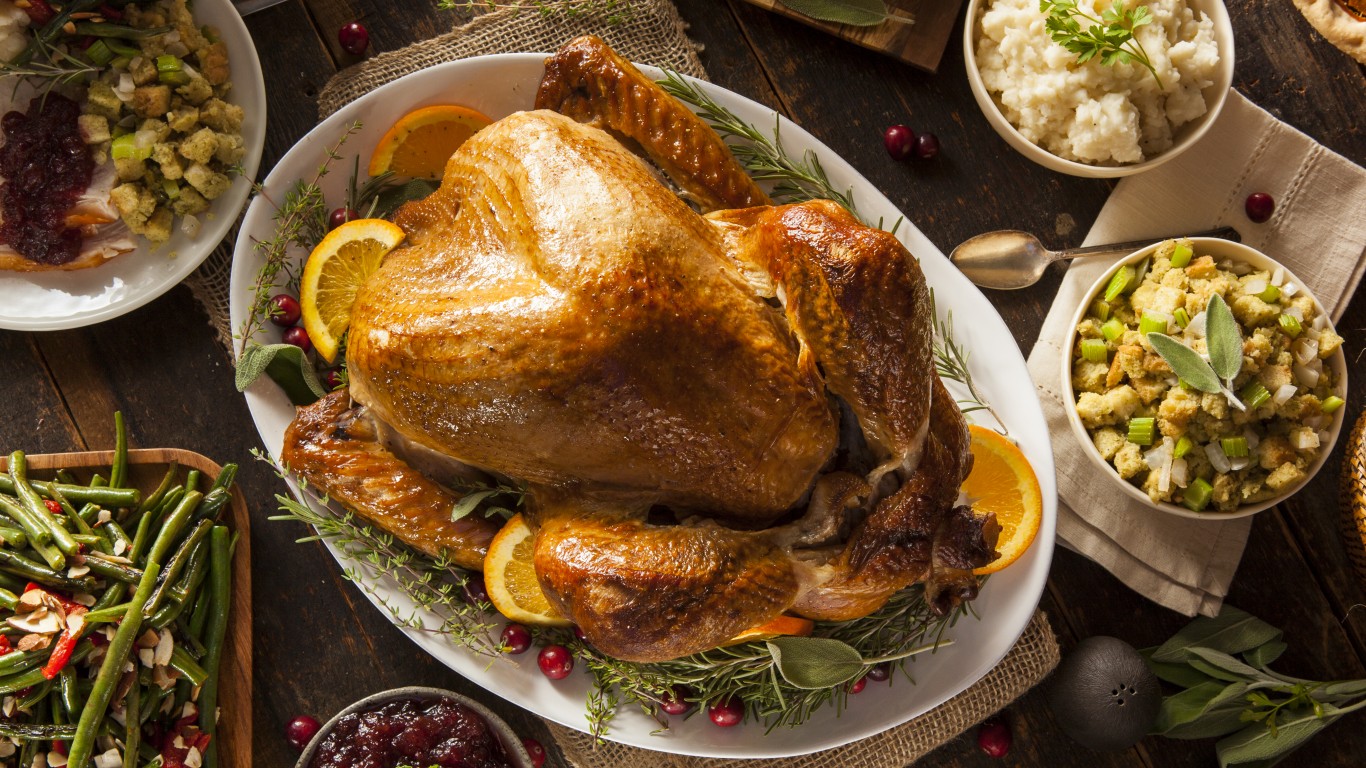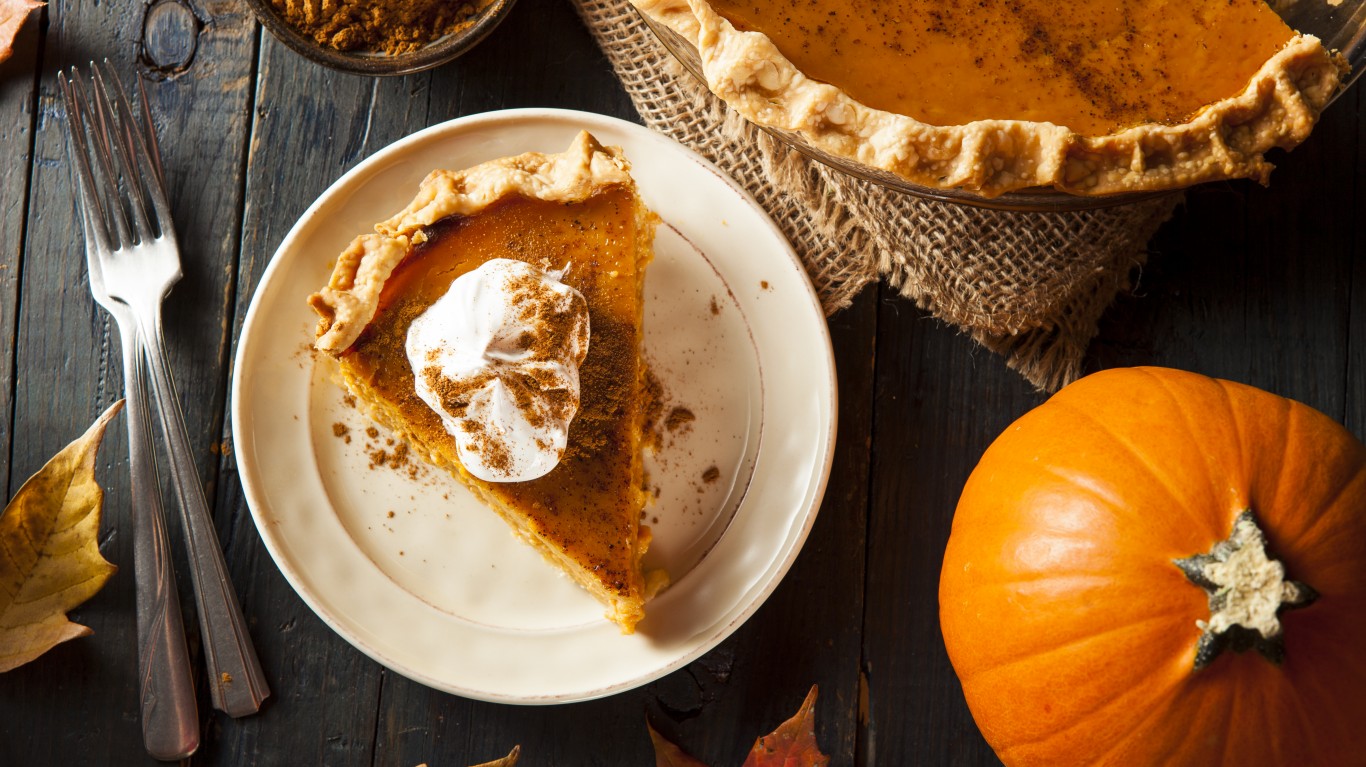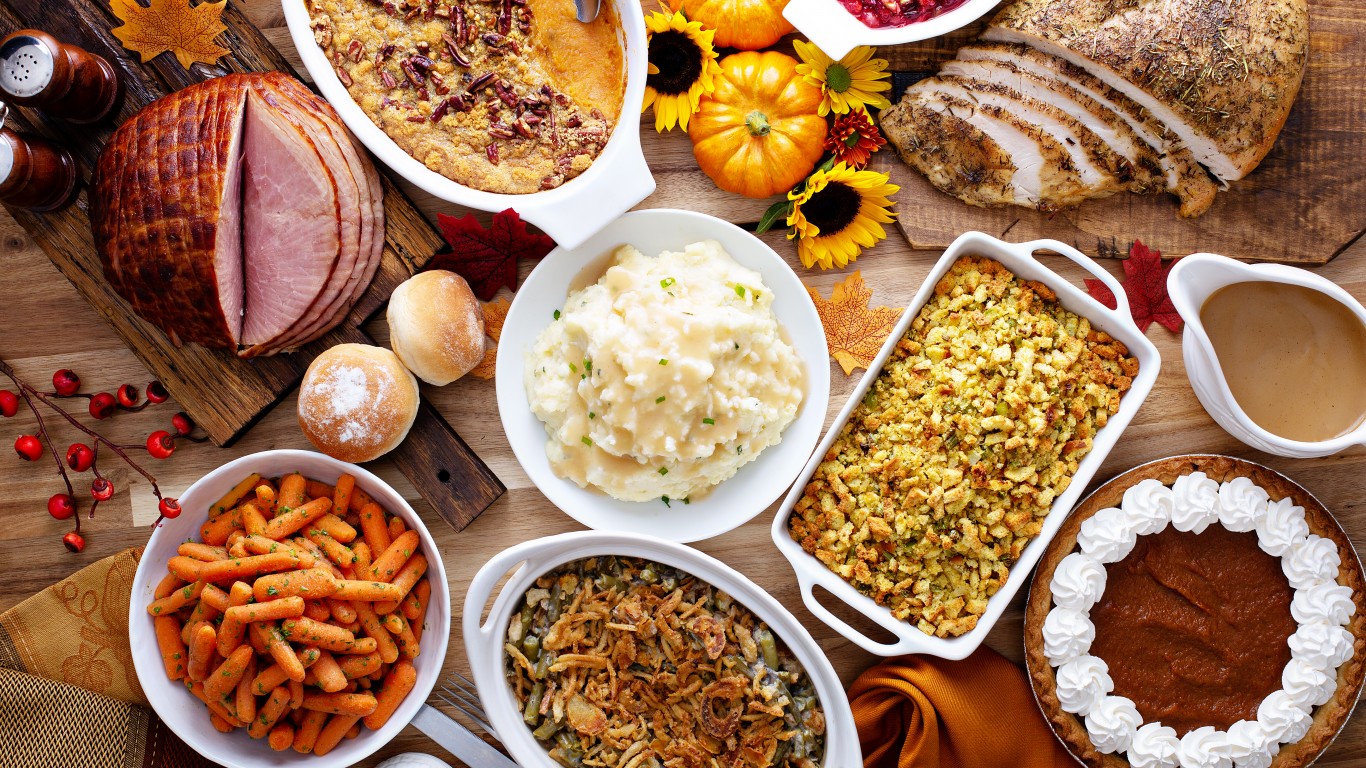
U.S. inflation hit a 40-year-high in the summer of 2022, and though recent readings suggest that it is starting to cool, the impact of rising costs of goods and service will be detrimental to this year’s Thanksgiving holiday for most American households.
According to the market research firm IRI, the typical Thanksgiving meal will cost nearly 14% more this year than in 2021, as the cost of popular side dishes, baking ingredients, and beverages have risen enough to be noticeable at the grocery store checkout line. In addition, the U.S. Department of Agriculture said recently that the average price of the main course at most Thanksgiving feasts – the turkey – will be $1.99 per pound this year, up from $1.15 in 2021 – a 73% increase. (Here’s what Thanksgiving will cost this year, thanks to inflation.)
Surveys find that rising food costs will compel many households to scale back their holiday plans this year, meaning fewer guests and fewer dishes. Some will forgo the holiday altogether while others will skip travel and host or attend “Friendsgiving” parties, where people gather for potluck-style dinner meals in their neighborhoods instead of going home to see family. More guests will also likely be asked to “BYOB.”
Another way this year’s Thanksgiving could be different thanks to inflation is in the matter of leftovers. Typically, Thanksgiving feasts leave behind a few days’ worth of turkey sandwiches, stuffing, mashed potatoes and gravy, pies, and other post-holiday treats. But this year, as hosts scale back, there may not be so much left to enjoy through the four-day weekend.
While scaled back Thanksgiving celebrations might not sit well with many, some might be happy to avoid the stress, especially younger adults who generally earn lower incomes and lack experience in orchestrating elaborate day-long festivities. (Here are 20 ways you should get ready for Thanksgiving right now.)
To compile statistics around the likely changes in Thanksgiving dinner this year and provide a few interesting numerical facts about the holiday, 24/7 Tempo reviewed data from the U.S. Census Bureau, as well as surveys conducted by Personal Capital and Finance Buzz.
Click here to see 16 things you should know about Thanksgiving this year

A quarter of Americans will skip the holiday
In September 2021, an Ipsos survey of 1,003 adults concluded that nine out of ten Americans were planning to celebrate Thanksgiving, with 61% saying they wanted to make the holiday special to make up for the impact of Covid-19 on the holiday in 2020. But this year is different. A recent survey of 1,000 adults by online financial advisor Personal Capital found that 26% of Americans had no Thanksgiving plans. Other than the higher cost of hosting Thanksgiving this year, 71% of respondents without plans cited losing a job as a factor in their decision.
[in-text-ad]

Dinner will be on a budget
While most Americans do plan to celebrate Thanksgiving, about a third of those polled by Personal Capital say the celebration will be smaller this year than last. Only 15% said they would host a larger Thanksgiving party.

Almost half of Americans will do Friendsgiving instead
Friendsgiving, a kind of informal potluck gathering among friends who opt out of family Thanksgiving feasts, will be more popular this year because of rising food costs. About 47% of respondents to the Personal Capital survey said they’d forego dinner with family and instead host or attend a Friendsgiving party.

Pizza is a top choice for Friendsgiving dinner
For those planning to forego elaborate family gatherings for the holiday, a pot-luck-style Friendsgiving dinner party will also more likely skip the turkey altogether. The top choice for an alternative? The ever-pleasing and economical pizza.
[in-text-ad-2]

Gen Z and Millenials are most stressed about Thanksgiving
Younger people tend to have lower incomes and assets than older ones. Couple that with the lack of experience among young adults in planning and hosting bountiful daylong dinner gatherings and it should be no surprise that more than half of Millennials (born between 1981 and 1996) and adult members of Generation Z (1997-2012) say they feel financially stressed by Thanksgiving, according to the Personal Capital survey.

Most Americans won’t have as many dishes on the Thanksgiving table
There are likely to be fewer leftovers to take home from the Thanksgiving table this year. More than half of the Americans polled by Personal Capital said they plan fewer dishes this year. Nearly 90% said they were cutting at least one dish from the menu this year.
[in-text-ad]

A quarter of Americans think turkey is overrated
If you find turkey dry and bland, you are among the one in four Americans who think the bird is an overrated Thanksgiving centerpiece, according to the FinanceBuzz survey. On the other hand, one in ten respondents said they think Thanksgiving ham is underrated. But turkey producers can relax: Most Ameircans consider turkey to be an important and delicious (and juicy if prepared correctly) part of the Thanksgiving feast.

Unpopular dishes that will be cut from the table
Despite that 25% who don’t much care for turkey and despite the higher cost for the bird this year, it remains the most popular dish of the holiday feast, followed by gravy, mashed potatoes, and stuffing. But dishes more likely to be cut this year include less popular items like mac and cheese, creamed spinach, and anything containing broccoli, beets, or squash.
Many will ask for help to cover the cost of hosting
With smaller menus likely to be served this year, a little more than half of respondents to the Personal Capital survey said they will ask guests to bring something to the Thanksgiving table. And about 42% of respondents said they would ask guests to pitch in money to cover the costs of hosting.
[in-text-ad-2]

Hosts will ask guests to bring alcohol and dessert
As any wedding planner knows, alcoholic beverages are among the priciest items someone can provide at any gathering. In order to cut the cost of hosting Thanksgiving, three out of four Americans are planning to ask guests to bring libations to the table, according to the Personal Capital survey. Nearly half said they would ask people to bring dessert.

A fifth of Americans think they don’t have enough money to host a dinner
Only 15% of Americans polled in the Personal Capital survey said they plan to spend more on Thanksgiving this year than usual while about a third say they would spend less. But an unlucky one in five Americans said they don’t have the money to cover the cost of being a Thanksgiving dinner host.
[in-text-ad]

Most people don’t plan on spending more than $200 on the dinner
A majority of Americans, 57%, said they would spend between $101 and $200 on Thanksgiving this year, according to the Personal Capital survey. About 28% said they would limit their Thanksgiving budget to $100. Only 15% said they plan to spend more than $201 this year.

Bargain shopping is a popular way to save money on Thanksgiving this year
Over a third of respondents to the Personal Capital survey said they would be more attentive to promotional deals and use coupons to reduce the cost of Thanksgiving in 2022. About 36% said they would shop earlier to avoid last-minute price hikes and supply shortages.

The majority of Thanksgiving dinners will be served between noon and 4 p.m.
The FinanceBuzz survey found that 59% of Americans plan to host their repast in the early to mid afternoon. Another 19% will dine between 4 and 6 p.m., 9% will eat between 6 and 8 p.m., and 3% will carve the turkey after 8 p.m. early afternoon. And some 10% will get an early start, sitting down before noon.
[in-text-ad-2]

There are 4 places named Turkey and 5 places named Cranberry in the U.S.
The U.S. Census Bureau says there are four places named after the popular Thanksgiving main course, including two Turkey Creeks â one in Arizona and the other in Pennsylvania â and two named simply Turkey, in North Carolina and Texas. All four have populations smaller than 600 people. There are five townships named “Cranberry,” the largest being in Butler County, Pennsylvania.

We celebrate on the fourth – not last – Thursday of the month because of shopping
According to the Library of Congress, President Franklin D. Roosevelt bowed to pressure from merchants to extend the Christmas shopping season by a week in 1939 by declaring that Thanksgiving would take place on the next-to-last Thursday of November for the District of Columbia and federal employees. Some states didn’t follow the decree, causing the holiday to land on different Thursdays. Congress later intervened to make the day of the holiday a national standard in which Thanksgiving lands on the last Thursday of November in five out of seven years.
Travel Cards Are Getting Too Good To Ignore (sponsored)
Credit card companies are pulling out all the stops, with the issuers are offering insane travel rewards and perks.
We’re talking huge sign-up bonuses, points on every purchase, and benefits like lounge access, travel credits, and free hotel nights. For travelers, these rewards can add up to thousands of dollars in flights, upgrades, and luxury experiences every year.
It’s like getting paid to travel — and it’s available to qualified borrowers who know where to look.
We’ve rounded up some of the best travel credit cards on the market. Click here to see the list. Don’t miss these offers — they won’t be this good forever.
Thank you for reading! Have some feedback for us?
Contact the 24/7 Wall St. editorial team.
 24/7 Wall St.
24/7 Wall St.


